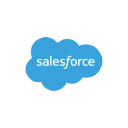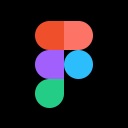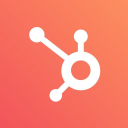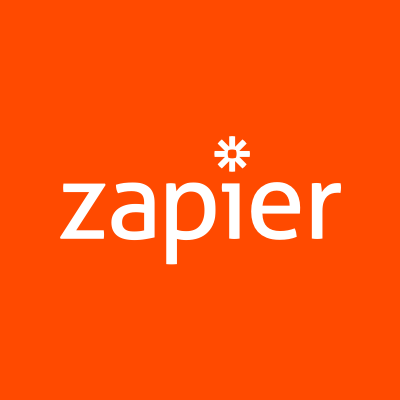How Two Non-Technical Founders Raised $2M And Started A SaaS Company
Hello! Who are you and what business did you start?
Hey everyone! I’m Mikhiel Tareen, and my co-founder Nick Scavone and I founded Freeflow. Based in San Francisco, we’re a B2B software company that provides a ‘virtual office’ for remote teams, so that they can talk and collaborate like they’re in the same room.
It’s faster than other communication tools (you can see who’s free in real-time and start talking with a click… no calendar invites or messaging back and forth) as well as more casual and organic. Remote teams that use Freeflow are cutting the time they spend in meetings by as much as 50%, yet still, talk 35+ times a day. The difference is it’s just for a couple of minutes and only when they need to.
Our customers are remote companies that miss the energy and speed of an in-person office, yet recognize the massive benefits of a distributed workforce. These are companies that are often scaling quickly, hiring globally, and need to quickly onboard new hires and integrate them into the culture.
We started the company back in February 2021, and have since closed a $1.7M pre-seed round, scaled the team to 8, and acquired our first cohort of paid customers.
As two non-technical co-founders running a software company, we wanted to share our story of how we got the business off the ground.

What's your backstory and how did you come up with the idea?
Before starting Freeflow, Nick and I both worked at Okta for 5 years. Nick started in sales, moved to Ops, and ended on the Data Team (he could give a masterclass on internal networking). I worked in sales, starting as a sales development representative (think cold calls and emails) and ending as an account manager working with enterprise companies in the Bay Area.
While we were there, we experienced tremendous scale. When we joined Oktain in 2016, it had 350 employees and $150M in revenue, and when we left in 2021 it had 3500 employees, $1B in revenue, and was publicly traded.
To keep up with the demand for new headcount, Okta started to enable remote work in 2019. Nick and I noticed that our remote counterparts had a tougher time than in-office folks. They were often out of the loop, disconnected from the team, took longer to onboard, and didn’t stay as long. We made the bet that remote work was the future of work and started to research the root cause of that problem.
A few months later, the pandemic shut down every non-essential office in the country, massively accelerating our prediction. You could say that was our aha moment, because massive change creates massive opportunity, and the corporate world was going through its biggest change since the invention of the internet.
We needed to build something that captured the feeling of talking in person– something casual, spontaneous, and inclusive. It had to make collaboration easy because you typically build relationships with the people you work with the most.
It gave us the answer to the question, “why does the world need to solve this problem right now?” which is something you need to have conviction about when starting a company.
We both left Okta on February 1st, 2021, after taking a year to validate our product idea during nights and weekends through a process I describe below. Walking away from your primary source of income is never easy, so Nick and I calculated what we would need to survive for a year in San Francisco, made sure we had it and agreed to go all-in on this for 12 months.

Take us through the process of designing and validating your first product.
Getting Feedback / Validating our idea
We took a problem-oriented approach to design our first product and didn’t write a line of code until we felt our solution was validated.
We knew what the impact of the problem was from what we saw at Okta (remote employees are disconnected from their peers, which causes a whole slew of issues), but now we had to identify what the root cause was.
This is where my first piece of advice for founders comes in: get comfortable asking people for time, help, advice, whatever. Hundreds of people. This will be a theme throughout this story, and one area where having a sales background can be helpful. You’re going to need a lot of help.
Starting with your network is the easiest step. For us, that involved looking at every Linkedin connection we had and reaching out to the folks we thought might be helpful. We augmented this approach with cold emails.
Once on a call, we asked them questions: Do you think there are any problems with remote work? What tools are you using to facilitate remote work? Are there any gaps, and what have you tried to fill those gaps? Over time, you start to see patterns and ultimately can identify what’s missing in the current landscape.
In our case, we identified that the root cause was how remote folks communicated with their peers. It was all through meeting software (like Zoom or Google Meet), and it was nothing like how people communicate in person. The always planned, overtly formal, and siloed nature of meeting tools made communication infrequent, awkward, and fatiguing.
We needed to build something that captured the feeling of talking in person– something casual, spontaneous, and inclusive. It had to make collaboration easy because you typically build relationships with the people you work with the most.
Designing the mockup
Our next step was designing a mock-up of what our tool would look like so that we could shop it around and validate the idea more. Here comes my second piece of advice for founders: Adopt a student mindset and take time to teach yourself how to do different things. The more efficient you can be at this the faster you’ll be able to go. We didn’t have the resources to hire a designer, so Nick spent hours learning how to use Figma, a popular design tool.
This was critical for us so that we could iterate on the product without having to code. Once we thought we had something that would solve the problem, we went back to Linkedin and cold emails and set up over 100 calls to get their feedback.
A major priority when conducting these calls is figuring out if people are urgently trying to solve the problem you’re addressing. You can build the best product in the world, but if it isn’t solving a “hair on fire” problem for someone, it doesn’t matter… no one is going to buy it. It sounds obvious, but it takes discipline to identify. Asking, “would you buy this?” isn’t going to cut it because people are generally nice and will tell you what you want to hear. We defined a ‘hair on fire’ problem in two ways:
- They’ve spent money trying to solve the problem before
- They were willing to sign a contract with us to build a solution
It took us 10+ iterations and 100 conversations, but once we had 5 contracts signed, we knew we had something and shifted to fundraising mode.

Describe the process of building your MVP and fundraising.
Since Nick and I can’t write code, we were dead in the water until we could hire an engineer. The chicken/egg problem is it’s pretty hard to get funding without an MVP, but we needed to pay the engineer we hired to build the MVP. We scraped together what we could, raised whatever we could from friends and family, and hit the pavement again to try to recruit someone.
This is where a piece of advice #3 comes in– focus on your storytelling. That’s pretty much what the job is. Selling, fundraising, hiring, motivating… It's all storytelling. This is where someone with a sales background has an advantage over a technical founder because that's a huge part of selling too.
We put a lot of thought into what our story was– where was this company going to go? Why should someone take the risk and join us now? Why were we uniquely positioned to beat everyone else and become a $1B company? Think through what advantages you have as a founder and paint a picture that you believe.
We discovered our founding engineer on Twitter of all places, and he was just down the road in San Jose. We met with him, pitched him the dream, and he jumped on board. It would be dishonest if I said we didn’t also get tremendously lucky, because he’s exactly the kind of person you want to start a company with.
While luck is always in the picture, you can increase your luck by upping your output. We met with dozens of engineers before him, we just didn’t stop until we found our winner. There’s advice #4… just don’t stop.

We sprinted through a build phase and emerged with a bare-bones, duct-taped-together MVP. It was time to get the business funded.
Fundraising
Getting money from VCs can be daunting– here’s the advice I’d give: go into it with the mentality that you are going to have to pitch 100 different firms. Maybe you close your round after 5 pitches, maybe it takes 20. But much like recruiting, you just can’t stop. It’s easier to keep going after meeting number 60 if you expected to do 100.
Getting your foot in the door to even get a pitch meeting can be a challenge because reaching out cold doesn’t work that well. Getting that warm intro serves as an initial test– it proves you can get creative and find ways to get access to who you need. We used our network (again) and made a huge list of everyone who might have an intro to a firm, and made the ask.
Some folks won’t respond and some will say no, but you will be blown away by how many say yes. Your network is a lot more powerful than you probably think. Through this approach, and after talking to tons of folks I hadn’t talked to in decades, we managed to line up 85 meetings. We took a ‘run the football’ approach and took them in a few weeks.
There’s very real momentum to fundraising, so I’d recommend hitting it in sprints, rather than spreading it out over months. We told our story, which revolved around massive market shifts and how our skillset (sales and distribution) was extremely important to win our space, and iterated on the story as we went.
When putting together your deck, there is a set formula to follow. There are a lot of great pitch deck templates online that you can use, and I would recommend going with one and not trying to reinvent the wheel.
You want this deck to be as short as possible while still packing a huge punch since most investors will look at it for less than sixty seconds. Using a template forces you to avoid adding unnecessary slides (and I promise you will think you need to… but you don’t.)
For the pre-seed / seed stage, investors care about the market size, the founders, and the product, in that order. I’ve had it described to me as being 60% market, 30% founders, and 10% product.
Put another way, they want to know that you’re solving a big problem, the founding team has the grit and differentiated skillset to win, and the product is probably going to change so its current form doesn’t matter.
Some things to think through before meeting with investors:
Market
- Is your Total Addressable Market over $5B? How did you calculate it? (Check out bottoms up vs. top-down)
- Is your market going to get bigger? Why?
- Is the problem in the market business-critical and worth paying for a solution?
Founding Team
- If 10 different companies had the same idea, why is your team the right horse to bet on? Think through your experience and unique insight.
- Will you be able to hire quickly? How?
- Assuming it takes 10 years to build a successful business, is it clear that the founders are willing to grind it out and not give up?
Product
- What proof do you have that people want it? Do you have users, paid contracts, letters of Intent, a lot of hype online, etc? Use whatever you can.
- How are you different from competitors? What gap are you filling? Is your solution 10X better than the other options, or is it just nice to have?
We ended up raising $1.7M from two great VCs and a group of angel investors.
We could now focus on building a business.
Since launch, what has worked to attract and retain customers?
Since we are selling to businesses we had to have a really clear picture of our ideal buyer profile, or who at these target companies cares about this problem and can also spend money. The work we did to validate the product before raising gave us a great jumping-off point, but things are always changing so it was worth revisiting.
Outside of running small tests, there is no point in pouring money into marketing until this buyer profile is rock solid because otherwise, it’s easy to waste a lot of money targeting the wrong persona.
Once we were confident that we had this right (it took some time to figure out with lots of testing), we had to put together the right message. We focused on speaking to the value of Freeflow. Businesses typically purchase things to save money or make more money, so wanted a strong story around ROI.
We started to get our story in front of buyers through low-cost channels– email marketing and direct outreach through Linkedin. Our focus was on acquiring some great initial customers who would work with us to iterate on the first few versions of the product, so it was a targeted approach, rather than going for volume.
Meanwhile, Nick was focused on putting this new funding to use and building out the team. Same as before, we used our network, increased output until we got lucky, and ended up with rockstars. All hires were on the product side, specifically engineers and a designer. We needed to build great things quickly, and I could still handle sales for the stage we were at.
How are you doing today and what does the future look like?
If you look at the phases of a startup, there is a very clear distinction between “figuring it out” and “we’re scaling as fast as we can.” What determines which side you are on is whether or not you have a product-market fit (PMF). PMF is defined in different ways by different people but ultimately boils down to meaning you have a product that the market wants.
Described another way, your sales process is repeatable and predictable, and the product provides clear, consistent value to your customers. Most startups die before finding a product marketing fit. It's a really hard thing to achieve. When companies say they are focused on iterating or pivoting, that means they are still seeking PMF.
You can’t scale your business until you have PMF, because it’s hard (and not that smart) to try to scale something that isn’t repeatable. There’s a good chance you’ll invest resources into something that isn’t quite right and will end up changing.
The future for us is building conviction that we have PMF and pouring gasoline on the fire to scale.
Through starting the business, have you learned anything particularly helpful or advantageous?
I’ve been on my soapbox plenty of times throughout this piece, but I’ll add one more principle that guides me and Nick. We didn’t make it up– Jeff Bezos and Frank Slootman (CEO of Snowflake) have both talked about it.
I think the most important thing is to just keep going. You’re going to feel like you’re getting punched in the stomach over and over. Celebrate the small wins as they come.
Go as fast as you can. Ship fast, sell, try random, pie-in-the-sky stuff fast. When you move with break-neck urgency, you cannot make anything perfect. This is a good thing. Building a company involves so much trial and error that making anything perfect is a huge waste of time.
Our mantra at Freeflow is, “get it to 70%.” Once it’s out in the world, you can start to understand if you’re on the right track, and you can go back and make it better. If you wait until everything is 100%, there’s a good chance you’ll miss the opportunity entirely.
What platform/tools do you use for your business?
Like most SaaS companies, we use a lot of SaaS tools.
On the GTM side, we use Outreach for sales email automation, Salesforce for our CRM, Hubspot for email marketing and lead capture, Apollo.io and Linkedin Sales Navigator for prospecting, salesbricks for contracting/invoicing, and Zapier to tie it all together (when native integrations don’t exist).
For collaboration, we “eat our dogfood” and use Freeflow. Our team is all over the globe, and I truly cannot imagine moving fast while building a strong culture without it.
What have been the most influential books, podcasts, or other resources?
There is an overwhelming amount of good content out there, but there is no playbook to build a business. There are too many variables– what worked for someone might not work for you. Absorb as much as you can, use what you want, and take it all with a grain of salt.
Some of the most impactful resources for us were:
The Lean Startup, a book that outlines an approach to validating your idea before building the product. This is a great book to read first.
Amp it Up, which was a blog post by Frank Slootman and since has been repackaged as a book. Great advice around the principles to follow when company building… “Narrow the focus, increase the speed, and up the quality.” Nick and I quote this almost daily.
After the Techcrunch bump: Life in the “Trough of Sorrow”. This is a short blog post but is very much worth reading when you’re in the thick of finding a product-market fit. That period can be tough, but the piece is a good reminder that it's tough for everyone.
Zero to IPO, a podcast by Freddy Kerrest, the co-founder of Okta (our previous company). Practical and anecdotal advice from an elite leader who built a phenomenal company.
Advice for other entrepreneurs who want to get started or are just starting out?
I’ve mentioned a few things already– ask for help, be a self-learner, and focus on your storytelling.
I think the most important thing is to just keep going. You’re going to feel like you’re getting punched in the stomach over and over. Fundraising, trying to sell a brand new product, and shipping a feature that isn’t well-received, you are going to get beat up. You’ll probably feel like you’re crazy like you were wrong about the conviction you initially had.
Just keep going. Try different things. Celebrate the small wins as they come. Some of the best companies in the world took 10 years to find product-market fit and started with an idea that is nothing close to what they sell now. They just didn’t stop trying. Nick and I have a saying, “survive and advance.”
And on that note, find a great co-founder. I got lucky– Nick was one of my best friends before we embarked on the startup journey. You want someone that you trust, that thinks in a way that you don’t, and who will keep you going on the down days. There’s a reason why VCs like co-founders more than a single founder. When you go to battle, you shouldn’t go alone.
Are you looking to hire for certain positions right now?
We are always looking for ambitious, fast-moving people to help us become the next iconic technology company. If you want to chat drop me an email at mikhiel@freeflow.chat.
Where can we go to learn more?
- Want to try Freeflow? Sign up here
- Freeflow.chat

Download the report and join our email newsletter packed with business ideas and money-making opportunities, backed by real-life case studies.

Download the report and join our email newsletter packed with business ideas and money-making opportunities, backed by real-life case studies.

Download the report and join our email newsletter packed with business ideas and money-making opportunities, backed by real-life case studies.

Download the report and join our email newsletter packed with business ideas and money-making opportunities, backed by real-life case studies.

Download the report and join our email newsletter packed with business ideas and money-making opportunities, backed by real-life case studies.

Download the report and join our email newsletter packed with business ideas and money-making opportunities, backed by real-life case studies.

Download the report and join our email newsletter packed with business ideas and money-making opportunities, backed by real-life case studies.

Download the report and join our email newsletter packed with business ideas and money-making opportunities, backed by real-life case studies.










